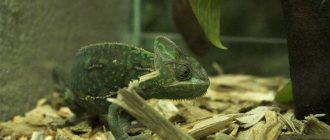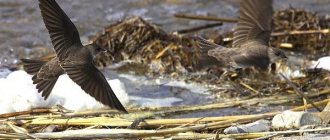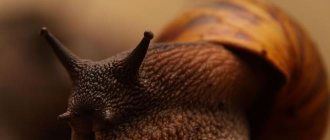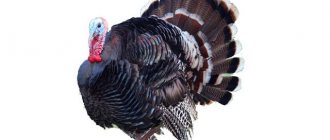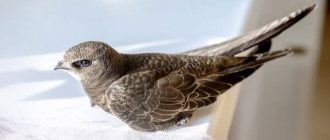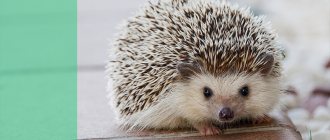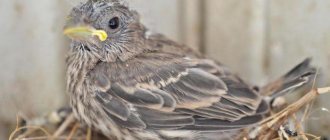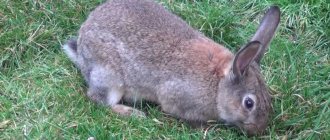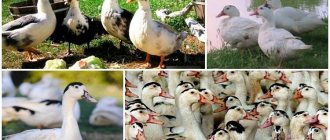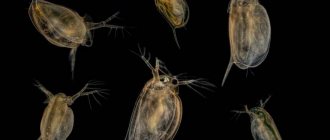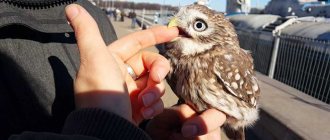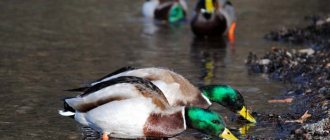Swifts are birds with long wings that protrude beyond the tail when folded. In size, these birds are similar to a sparrow. The shape of its head resembles a bird of prey, but its menu includes only insects. Sometimes these birds are confused with swallows. Yes, the external similarity between these bird species is great.
However, swallows, unlike swifts, have a white breast. Another difference between these birds is the location of the toes on their paws. In the swallow, three of them are directed forward, and one is directed backward. But nature has given the swift the opportunity, like a climber, to climb tree trunks and the walls of buildings. He has all four fingers pointing forward.
Swifts are birds with brownish-black plumage, reflecting a barely noticeable greenish tint. By autumn this color becomes paler. It fades from the bright summer sun. But the swift’s paws and beak are always black.
Geography of distribution
Swifts can be found throughout Europe with the exception of tundra zones. These birds also flew beyond the Urals, populating territories as far as Transbaikalia. Small black birds also live in North-West Africa. You can meet them in Syria and Palestine, as well as in the Himalayas.
Swifts winter in Africa. During this period, they occupy all of its southern territories, starting from the equator, reaching the island of Madagascar.
Today, the swift is considered a city bird. However, some of its nesting sites are also found in rural areas. In villages, birds choose stone buildings for their settlements. They can be cowsheds and churches, as well as grain warehouses.
But in Transbaikalia, the black swift can only be found in forest areas. Its brother nests in cities. This is another species of swift called the white-banded swift.
Arrival after wintering
Scientists have discovered many interesting ecological features of swifts. One of them is that after wintering, these birds arrive quite late. However, their appearance guarantees the onset of stable heat.
Swifts fly to their native nests within a certain period, lasting from 18 to 27 days. Moreover, these birds do not create a large school. They appear in small groups. Arrival times vary by one or two days.
Interesting fact
People see swifts almost every day. But due to their discreet color, it is unlikely that anyone will remember such a last meeting. When in a hurry, a swift may generally seem similar to a young pigeon, which is why people think that it is not a swift.
Swifts are the birds that are the first to sense the arrival of spring and begin to scream under the windows. The voice, by the way, is very loud and disgusting to people. It is difficult to confuse it with other birds. This is due to the strong dependence of swifts on the weather; they sense a change in the weather in advance and begin to prepare for it.
Usually, swifts build their nests for many years, and after a winter in foreign lands, they return to their old place. One can endlessly marvel at the memory of these birds, but if they survive the winter well, they will definitely return to their native nest. They build their house in old trees or in small cracks under the roof of a human dwelling.
- The speed of swifts can reach 170 km/h.
- In flight, the swift is able to sleep for several hours at a time, only occasionally flapping its wings.
- Their body's thermoregulation is poorly developed, so when there is a sharp cold snap, the swift goes into hibernation.
- The only enemy of swifts is the falcon, only it develops the necessary speed for hunting.
- In one day, a female and a male can bring up to 4,000 insects to their young.
- If there is not enough food to feed the offspring, then the parents are able to throw the eggs out of the nest.
Natural nutrition
Food for swifts in nature is exclusively aerial plankton, consisting of insects flying in the air and small and medium-sized spiders raised by the wind. The feeding process of these birds occurs in flight, at an altitude of 50 to 100 meters. In unfavorable weather conditions, swifts descend closer to the ground. However, it also happens that air masses carry insects far upward. In such cases, swifts are able to rise to a height equal to a kilometer from the surface of the earth.
The bird menu is very selective. As a rule, they catch and eat only those insects that they can swallow. That is why their prey is small in size. In addition, swifts do not eat stinging insects. However, they are not distinguished by their bright warning coloring, which significantly expands the swift’s diet. For example, as food he can choose a hoverfly, which looks very similar to a bee.
During the hunt, the swift collects the insects it has caught in the back of its throat, where a special food pouch (crop) is located. There, flies and other living creatures are bound together into a ball (bolus) using saliva. The swift either periodically eats the food prepared in this way or takes it to its nest. The food pellets he collects can contain thousands of insects.
When the weather turns bad, swifts rush to the water. Here it is easier for them to catch prey. It has been established that birds tend to avoid not only bad weather, but also places where there is low pressure. In search of more favorable conditions, birds fly around the area of rain in the same direction as the wind. Moreover, during the day, swifts are able to move considerable distances (up to 800 km). The birds wash down their food with drops of rain. They can also obtain liquid in low flight, sliding their black beak along the water surface.
general characteristics
The size of swifts ranges from 10 to 25 cm and weighs 50-150 grams. They are considered medium-sized birds and resemble swallows in appearance. They have a fairly large head, dark eyes, a short and fairly sharp beak. The wings of birds are curved and long, but their legs are poorly developed and their size is small. Short legs are anatomically designed to be used to grasp various vertical surfaces. The toes point forward and the claws of swifts are sharp.
Swifts have unique anatomical characteristics that are common to the swiftlet family. They have a lateral “grasping foot” with which they can be attached to various difficult surfaces such as stone walls and chimneys. These places are not accessible to other birds, since they do not have such features.
Typically, swifts have a fairly dark plumage color, with black and gray predominating. Sometimes you can see swifts in which white appears in their color. It is found in the area under the tail, on the throat, near the belly and forehead. The tail feathers are usually forked.
Sexual dimorphism in birds is not pronounced: males and females practically do not differ from each other.
Help for birds
It happens that a bird that has received any damage ends up right under a person’s feet. Anyone who decides to help her and take the little warm lump home must, first of all, determine whether the bird is an adult or not. Swift chicks are distinguished by a white edging located on the large flight feathers, as well as white specks on the head and the presence of tubes from which the feathers open.
After this, the person should examine the bird for any deviations from the norm and external disturbances. To do this, all parts of the body are carefully studied. If the wing or leg of a swift is dangling, then the bird should be taken to a specialist, since this condition indicates the presence of a fracture.
In the absence of external damage, lethargic and weakened birds must be checked for the presence of infectious diseases. In this case, you will need to be tested for psittacosis, bird flu, helminths and protozoa.
Sedentary swifts must be warmed up. For this, incandescent lamps with a power of 40 or 60 W are suitable, as well as bottles and hot water bottles.
A person should also check whether the swift they find has a swallowing reflex. What to feed this bird at home? Her diet does not have to be varied. In the process of nursing and feeding a swift, you need to remember what the bird eats in natural conditions and not deviate from its natural diet.
Departure time
Since adult birds do not teach swifts to fly and, when they fly out of the nest, they immediately head to Africa, the chicks begin to train in the nest before flying.
If you see that the swift has become restless, aggressive, his look has changed, and he often trains, then the time of departure is approaching.
Before departure you need to check:
- The swift's wings must be at least 3.5 cm longer than the tail.
- Weight ranges from 37–42 g.
- All tubes from the feathers should come off.
- The base of the feather, where the tubes were, should darken.
You need to release the bird in a vacant lot, with short grass, where there are no wires, houses, trees, or cars, so that if it falls, it can be easily found. The weather for the next few days should be sunny, warm and calm.
You need to release by raising your hand with the bird up. Do not throw, swing or throw. The bird itself will decide whether to fly or not. It happens that swifts sense the presence of a predator and do not take off from the hand; in this case, you can try to release them the next day.
Important:
- Don't let it fly around the house or apartment.
- Don't teach to fly.
- Do not take it outside.
- Treat the plumage very carefully and carefully.
So, feeding a chick in the first days is not so easy, but then, when it rises from your palm into the sky and lives there happily for more than 10 years, believe me, you will never forget the time you spent with this bird, since this is a fantastic bird will forever reside in your soul. Add to our group in contact, we will always give advice on time and help in this good deed! Good luck!
Content
Swifts brought home should never be placed in bird cages. In them they will panic and fight, which will damage the plumage, without which it is impossible to fly. It is best to keep the swift in a plastic, half-open box. For a chick, the dimensions 30x20x15 cm (length, width, height) are quite suitable. A small “nest” made of cork or wood is also placed here. If these materials are not available, then a small glass vase wrapped in fabric to create warmth will do.
It is important that the box is clean. The swiftlets will be exercising their wings and therefore should not be exposed to droppings. Place absorbent paper towels in the bottom of the box and change them every day.
Feeding on insects
What to feed a swift in captivity so as not to harm it? House and banana crickets are ideal for this purpose. You can purchase these insects at pet stores for a small fee. However, they are not the only ones your swift can consume. What to feed your new pet at home? Its menu is varied with Turkmen and marbled cockroaches. These insects contain a large amount of useful substances. If you don’t know what to feed the swift chick, then buy these cockroaches for it. They will not only be perfectly absorbed by the young individual, but will also have a positive effect on the quality of its plumage.
For the health of swifts, it is useful to feed them ant pupae. This bird food contains a wide variety of vitamins. Where can I get ant pupae? They can be found in the garden or in the forest. A swift will eat this delicacy with pleasure.
What else can you feed this bird at home? Flies and mosquitoes will be a good help for her.
Often people caring for a feathered pet ask the question: “Can I feed a swift with bloodworms?” Yes, inclusion of these insects in the menu is allowed. However, it is worth remembering that the bloodworms should only be fresh.
The question also often arises about whether it is possible to feed a swift with maggots. Yes, they come as an addition to the main diet. Only maggots should be washed and finely chopped. It is worth remembering that this food is fatty and creates unnecessary stress on the bird’s liver. That is why maggots can be given to swifts in minimal quantities. This volume should not exceed one teaspoon per day.
What to feed an adult swift? For feeding, you can add mealworms grown using pure raw materials to its menu. During the day, their number should not exceed 3 pieces. However, it is worth remembering that such worms should be pressed down a little before serving. This is due to the fact that the larvae of these beetles have very strong jaws that can damage the bird’s esophagus. Also, in order not to harm the swift, the heads of the mealworms can simply be cut off.
Earthworms are a dangerous food for swifts. Birds can pick up helminths from them.
Little chick falling out of the nest
If you come across a very small swift that has fallen out of its nest, the main thing for it now is food.
The little swift needs to be fed every 2 hours at least 10 times a day. The approximate amount of feed according to age (by day) is provided at the end of the article in the tables.
The bird should gain weight by 1–1.5 grams every day! The chick in the nest can weigh up to 55 grams. But before it starts flying, the chick begins to lose weight and refuses to eat. At this stage, you can feed him less, but ensure that the weight before the flight is not below 37 grams. It is important to feed the chick sufficiently so that it has a reserve for weight loss! A hungry bird has poor feather development, and feathers are the whole life of a swift!
As noted at the beginning of the article, swifts are strictly insectivorous birds.
After purchasing crickets and cockroaches, they must be placed in the freezer so as not to accidentally infect the bird with helminths (especially if, before purchasing specially grown food, you have to feed insects caught in the wild). Then take out the required amount, tear off the legs, whiskers, ovipositor (since these hard surfaces can injure the swift’s esophagus; or you can buy ready-made “carcasses” without legs), throw them into warm water, when they are defrosted, put them on a napkin and feed them. There is no need to give swifts a lot of water, as they get it from insects.
Ant eggs (pupae) can be bought or dug up from anthills. This is a very healthy and favorite food of the swift. Ant eggs are also stored in the freezer; they must be thawed and washed before feeding. Grasshoppers or grasshoppers can be caught in the wild, but they must be frozen for at least 5 hours to destroy the helminths. By the way, swifts on fillies do not gain weight too quickly, so they are required more than other food insects.
Swifts CANNOT be fed with meat, bread, eggs, maggots, potatoes, baby food, bird food from a pet store, vitamins, earthworms, bloodworms, and the like.
Nutrition in the absence of insects
So, you have a swift. What to feed this bird at home? Unfortunately, the swifts' diet should consist only of insects. Any other products cause irreparable damage to their body. Porridges, various feed mixtures or mash are not only unable to replace natural nutrition, but also cause the slow death of the bird.
But sometimes a person who has found a bird that has fallen or nested is faced with the question: “What to feed the swift chick in order to support the vital functions of its body in the coming hours, until the insects it needs are found?” In the first couple of days, your feathered pet can be treated to baby food puree made from beef or turkey. Give it to the bird using an insulin syringe. Very young chicks are fed every hour. In this case, the volume of puree at a time should be from 0.3 to 0.5 ml.
You should not give grains and bread to your feathered pets. Swifts also do not like ready-made food intended for insectivorous birds. Reviews from those who care for these birds warn against using these products, as they can cause poisoning.
Population and species status
The population of swifts around the world does not look catastrophic, regardless of external influences, both the natural environment and humans. Despite this, there are rehabilitation centers for such birds in the world. Chicks often fall out of the nest, especially in bad weather, as they can hibernate. People, having picked up these birds, cannot feed them in captivity, since this is associated with some difficulties. Some people, knowing about the existence of such centers, take the chicks to specialists who are engaged in feeding such birds.
Making mixtures
If you have had a black swift for several days now, what should you feed it to keep your feathered pet healthy and active? As mentioned above, you can’t do without insects here. However, in addition to this, additional minerals and vitamins must be present in the diet. In order to enrich food with elements necessary for the health of the swift, special mixtures should be prepared. Recipes for some of them are given below:
- The mixture for the swift includes finely grated boiled chicken eggs, lean beef, and mealworms, chopped with scissors. Ant pupae are also added here. Instead of mealworms, the mixture can be enriched with insects caught in nature, fresh bloodworms or pre-scalded maggots.
- This recipe has a wide variety of products, so it is especially good for keeping swifts for a long time. In this case, the mixture includes 20% raw lean ground beef, 25% hard-boiled chicken egg, pre-grated, 20% non-acidic, preferably boiled and squeezed cottage cheese, 20% ant pupae or mealworms, 10% finely grated carrots and 5 % baby formula.
- Another mixture rich in vitamins and minerals includes 30% minced beef heart, 25% chopped hard-boiled chicken eggs, 15% cottage cheese, 15% grated carrots, 10% insects and 5% baby formula.
- For black swift chicks aged 3-6 weeks, the mixture includes: 2-3 house crickets, 3-4 drones, half a wax moth larva, several flies and their larvae, and one-eighth of a teaspoon of crushed dried insects.
The prepared products are rolled into balls the size of peas, and 4-5 pieces are given per feeding. It is also important not to forget to water your feathered pet. This should be done after each feeding, dropping 4-5 drops of water into the beak from a pipette. You can go another way. Drinking may not be given at all if the balls are pre-moistened in water before feeding.
How to prepare food for swifts?
Before handling products for birds, you should thoroughly wash your hands using a disinfectant. For each feeding, food should be taken only freshly prepared.
When using dried insects, they are first cleaned by selecting and removing foreign particles in the form of branches and stone fragments. After this, the bugs or spiders are placed in warm water and then dried on a sieve. Do the same with frozen insects, bringing their temperature to room temperature.
At the next stage of cooking, all ingredients are laid out on a plate. In this case, you should pay attention to the smell of food. Rotten insects are not suitable for swifts as food. When preparing food pellets, crushed fly larvae can act as a binder.
Number of meals
How many times should you feed a swift at home? Small and weakened chicks are given food every hour throughout the day from six in the morning to ten in the evening. In this case, the food should be small portions of ground bugs. Strong and mature swifts feed less frequently, every two to three hours. It is important that the bird is fed sufficiently densely. To do this, she needs to completely fill her goiter. And this can be done only by giving the maximum amount of feed.
The crop in most birds is part of the esophagus. In this zone, food is accumulated and stored, which helps the swift not to be distracted from its hunt. They learn about the filling of the crop by feeling a small (pea-sized) ball on the bird’s neck. As a rule, a typical meal is equal to five cockroaches or ten medium-sized crickets.
Injury
If a swift has an open fracture of the shoulder, wing, injury to the eye, body, bruises or wounds, it is necessary to numb the pain with Meloxicam tablets (7.5 mg - whole tablet, 15 mg - 1/2 tablet) - diluted in 0.75 ml of water; then take 0.1 ml (2 drops) of this solution and add 12.5 ml of water to it. The resulting second solution should be given to the swift 0.05 ml (one drop!) 1–2 times a day for 2–14 days, depending on the condition. Mix a new solution every day.
IMPORTANT! IT IS IMPOSSIBLE TO ANESTHESATE (as well as bandage or cast) an INJURED BIRD, even in the case of an open fracture, if it does not die from painful shock right at that moment. If you anesthetize a bird, it will no longer be able to fly, even if the injury was treatable. Dark boxing (2 weeks), good nutrition and PAIN - 3 components of success. This forces the bird to sit still and take care of the damaged wing. If the pain is numbed, the bird will feel able to fly. She will be restless and active. This will most likely prevent the damaged organ from recovering correctly. The bird's pain threshold is very high.
If at first glance the bird is intact, you need to shine a flashlight into the eyes and find out whether the pupils constrict at the same time; if not, it means it has a traumatic brain injury (TBI). One of the telltale signs of TBI is developing swelling (eg, swollen eyes, puffy eyes). In this case, it is necessary to give a one-time hormonal drug on the advice of a veterinarian and in the exact dosage and place it in a dark box for two weeks. Starting from the 4th day, you need to give:
- Piracetam - 1 drop per day, the drug is cumulative, so it takes a long time to give,
- Mexidol - 1 drop per day,
- B1 - 1 drop 1 time per day.
Important! Drugs for TBI should absolutely not be used in the first three days!
You can read detailed information about the treatment of swifts on the page dedicated to assistance, maintenance and feeding on VKontakte or in the group on Facebook.
Don’t rely too much on help from veterinarians or ornithologists; the swift is a wild bird, and ornithologists often give incorrect advice on feeding or treating the swift. Moreover, do not give the swift to zoos or bird sanctuaries; often the swift is given to feed birds of prey, since the swift’s food is expensive and hardly anyone would want to treat it there.
Feeding technique
A strong and healthy swift chick feeds actively. It literally pounces on the person's hand holding the food. It is most convenient to give food to such birds using tweezers.
Weakened swiftlets, even if they are very hungry, do not open their beaks themselves. They are given food either from a finger or from a syringe. But first of all, the haircut is fixed like a shawarma using a napkin. Next, they open its beak with a fingernail, where food is placed. Such manipulations are successful. Even very weakened chicks begin to swallow insect mush with pleasure. After feeding, it is advisable to drop a few drops of water on the root of the bird's tongue. All described manipulations must be done carefully and gently. This is necessary in order not to bend or break the fragile tissues of the beak. Adult emaciated swifts are fed in the same way as chicks, giving them semi-liquid soft food from insects.
An unexpected find
Sofia Shepelya found a swift in the entrance. The bird sat huddled in a corner and could not fly away. Sonya felt sorry for the animal and took it to the veterinary clinic, while simultaneously asking the question on social networks: “Who is this?”
Common Swift at the entrance of Sofia Shepelya
— This bird is called the common swift. Now, in July, the chicks are just setting off on their first flight and some specimens are falling,” explains Ruslan Zhukov, senior lecturer at the Department of Soil Science, Agrochemistry and Forestry at the Institute of Biology and Ecology of VlSU .
Sergei Osipov discovered the same specimen at his factory. The man took a photo with the bird and left it against the wall of the building. When leaving work, Sergei did not see the bird in its original place. “Flew away,” he thought.
It’s better not to pick up a swift
“It’s not a fact,” says Ruslan Zhukov , “swifts need an elevation to take off, they don’t know how to do this from the ground, but a cat can drag them away from there.” Swifts also cannot walk on the ground; their legs are designed to cling to branches.
